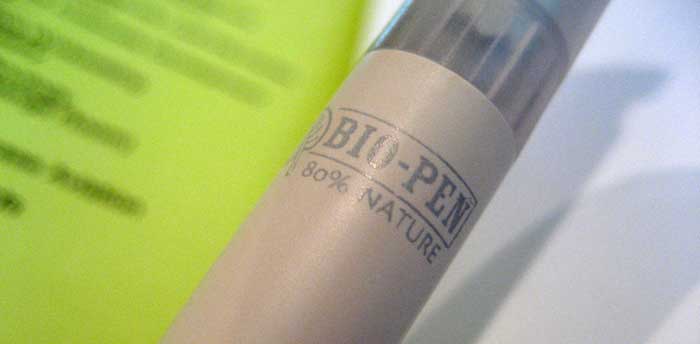
Bio-pens are made of 80% cellulose acetate, a material that was invented in 1865 and is now most commonly used in cigarette filters. It is a biopolymer made from wood pulp with an embodied energy of 100 MJ/kg – about six times higher than glass and and twice as much as PET, although it’s biodegradable unlike either of them. But the reason I noticed these things was the label on the object, which claims it is ‘80% nature.’ I’ve argued in the past that it’s better to admit to knowing when you’re being wrong than ignoring what could be right, but this disclaimer smacks of several kinds of falseness. Of course, the entire pen is made of nature, but only 80% from renewable resources – at a higher energetic cost presumably borne by the depletion of non-renewable fuels. If the pen’s casing – the only part made of cellulose – were thinner or better designed, the percentage of naturalness would drop but the product would also have less impact. Maybe the lesson is that you can’t win when making disposable pens, especially when your company’s logo is ‘helping to save the planet, one promotion at a time!’